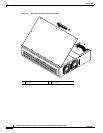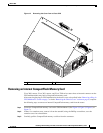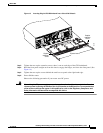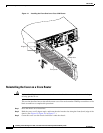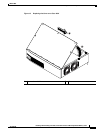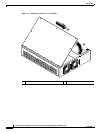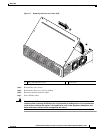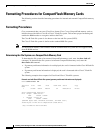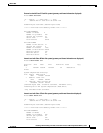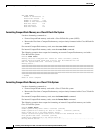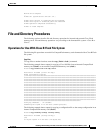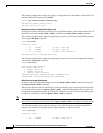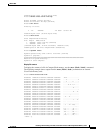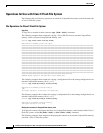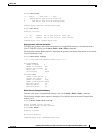
20
Installing and Formatting Cisco 2691, Cisco 3631 and Cisco 3700 CompactFlash Memory Cards
78-13892-03
March 2002
Formatting Procedures for CompactFlash Memory Cards
Formatting Procedures for CompactFlash Memory Cards
The following sections describe formatting procedures for internal and external CompactFlash memory
cards.
Formatting Procedures
Cisco recommends that you erase (Class B) or format (Class C) new CompactFlash memory cards to
initialize them with either a Class B or Class C Flash file system. This ensures proper formatting and
enables the ROM monitor to recognize and boot the Flash.
The Class B Flash file system is also known as the low end file system (LEFS).
The Class C Flash file system is similar to the standard DOS file system.
Note A CompactFlash memory card formatted with the standard DOS file system does not support booting
from the ROM monitor.
Determining the File System on a CompactFlash Memory Card
To determine the file system of an external CompactFlash memory card, enter the show slot0: all
command. To determine the file system of an internal CompactFlash memory card, enter the
show flash: all command.
• If geometry and format information is not displayed, the card is formatted with a Class B Flash file
system.
• If geometry and format information is displayed, the card is formatted with a Class C Flash file
system.
The following examples show outputs for Class B and Class C Flash file systems:
External card with Class B Flash file system (geometry and format information not displayed):
Router#show slot0: all
Partition Size Used Free Bank-Size State Copy
Mode
1 31360K 6502K 24857K 0K Read/Write Direct
Slot0 CompactFlash directory:
File Length Name/status
addr fcksum ccksum
1 6658376 c3725-i-mz
0x40 0xE0FF 0xE0FF
[6658440 bytes used, 25454200 available, 32112640 total]
31360K bytes of ATA Slot0 CompactFlash (Read/Write)
Chip information NOT available.



